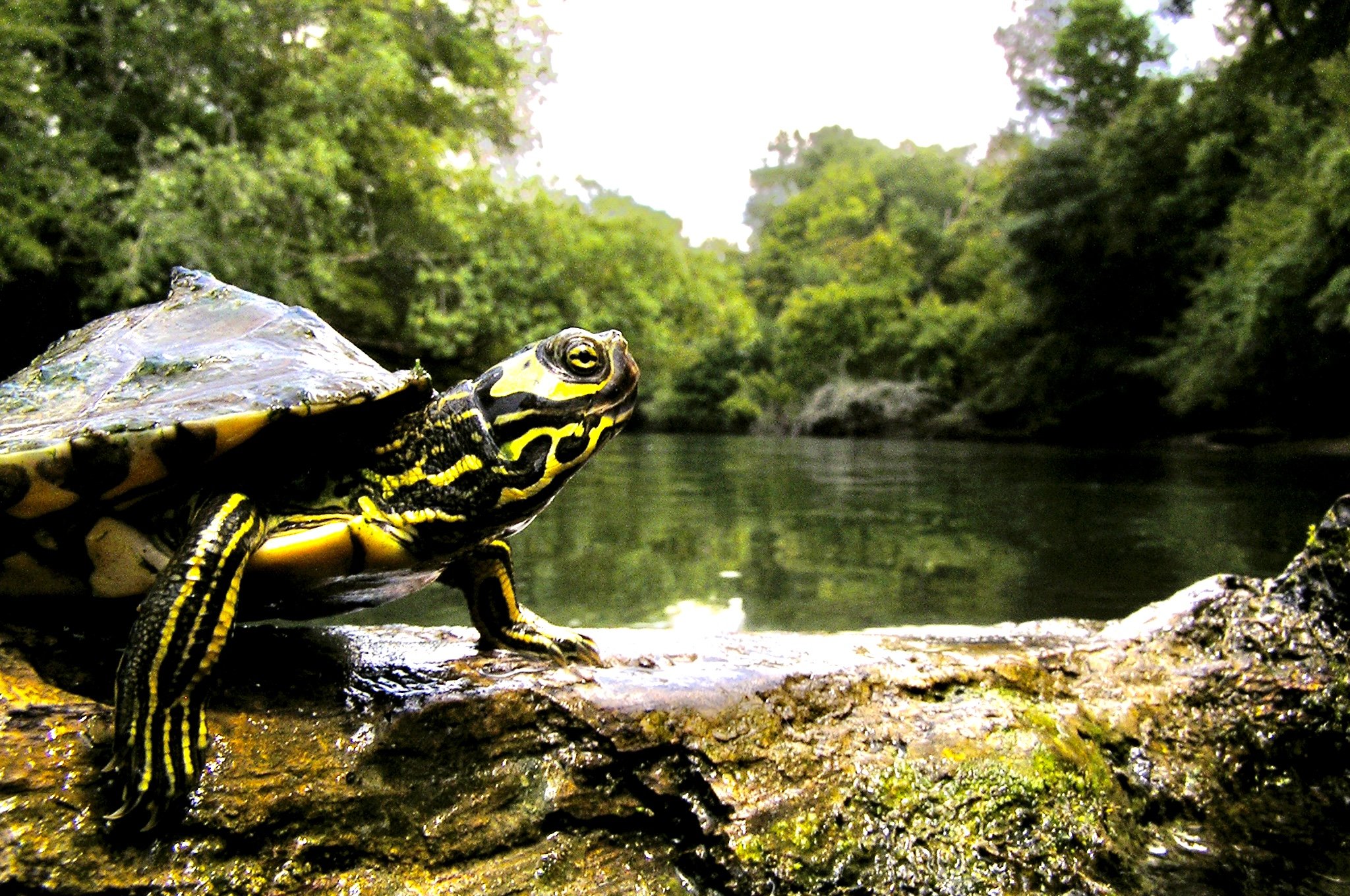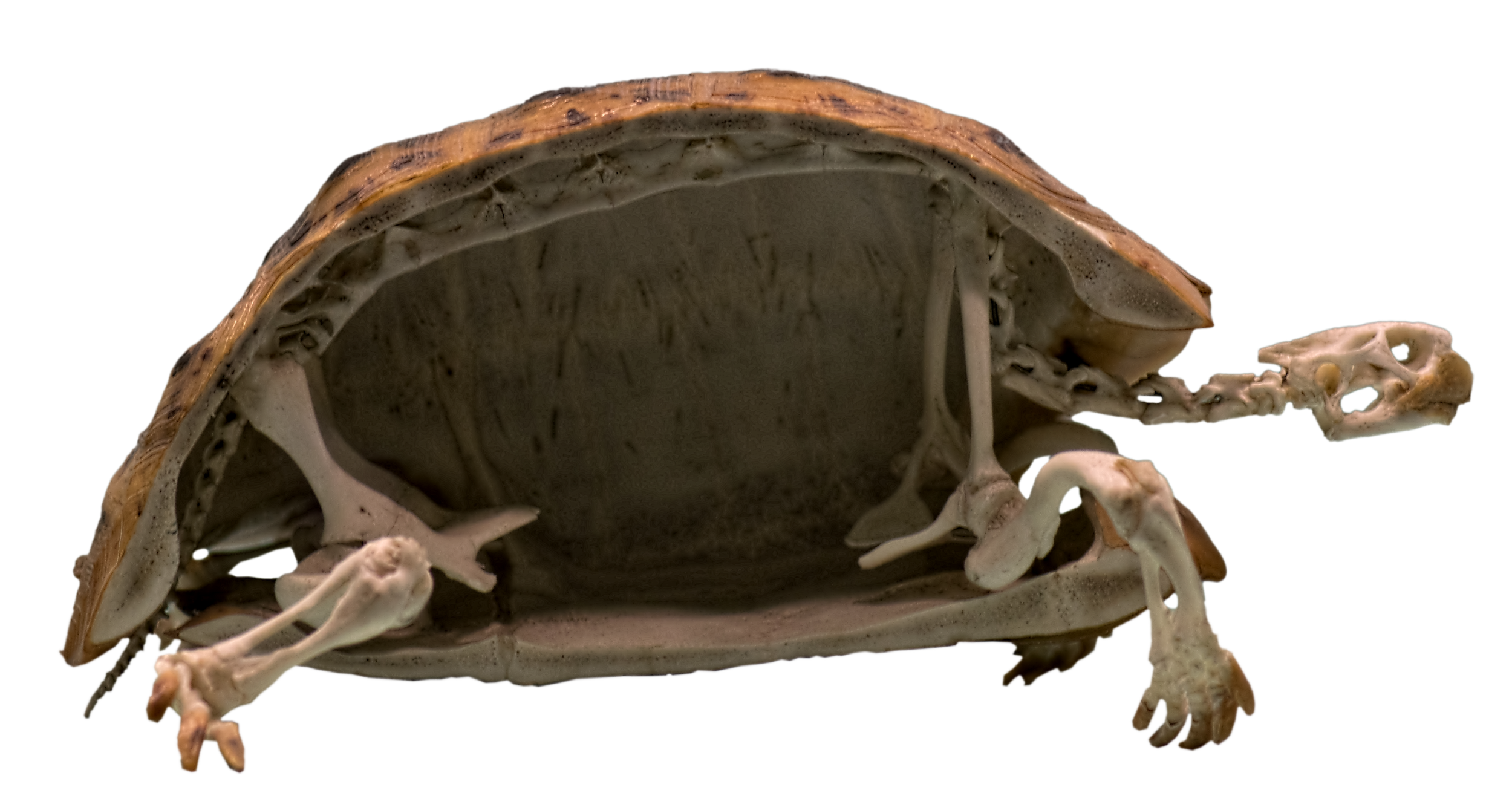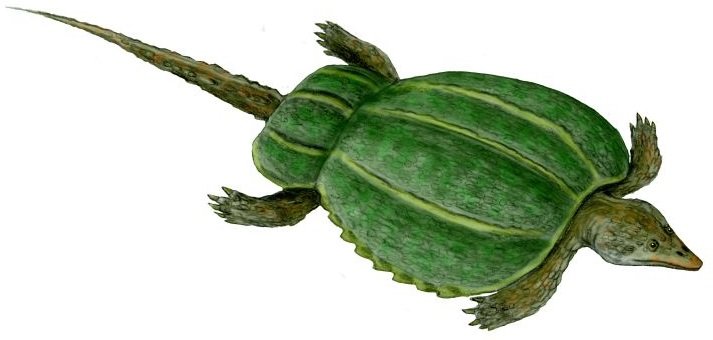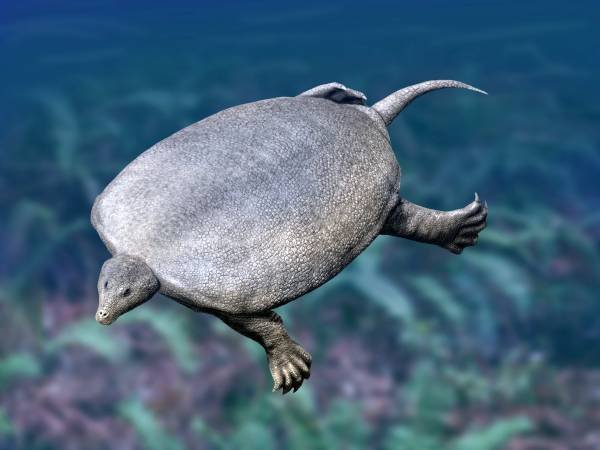Evolution and the Repeating Turtle
/Image by Timothy J. Walsh.
In biology, evolution occurs as species slowly accumulate traits that help them better adapt to their environment and way of life. Sometimes, unrelated species will adapt to similar environmental pressures in similar ways, resulting in species that look much alike but are only distantly related. This is a phenomenon known as convergent evolution. A very obvious example of convergent evolution can be found in flying squirrels and sugar gliders. Both are small rodent-like animals that glide on membranes stretched between their limbs, but they are separated by over 100 million years of evolution and both evolved from non-gliding ancestors.
There are many cases of convergent evolution that can be seen in modern and extinct plants and animals. One case we’ve explored previously on this blog is the multiple animal lineages that evolved crocodile-like body plans. Another fascinating example of convergent evolution can be found when looking at the turtle. Turtles are iconic for their armored shells, which protect them from predators both on land and in the sea. There are many other animals alive today that have developed armor of some sort, but in prehistory, we can find truly uncanny examples of convergence.
Cross-section of a turtle skeleton. Image by Thomas Quine.
Turtles
“Turtle” refers to any species in the order Testudines, which also contains tortoises and terrapins. There are 357 living and recently extinct species of turtle currently recognized, which live on every continent except Antarctica, and in every ocean except those bordering the two poles.
The many varieties of turtle likewise have a variety of lifestyles and body plans, ranging from those adapted to live entirely on land, to those that only rarely leave the water. Despite their differences, turtles share a number of features. They all have keratinous beaks without teeth, and their skulls lack openings at the temple that are present in other reptiles. And of course, they have shells. In most cases, their shell is made of bone and covered by scutes, or scales, made from keratin, the same protein that makes up human fingernails and hair.
The upper shell that covers a turtle’s back is called the carapace. The carapace is formed from highly modified bones from the ribs and spine, flattened and fused together. The shell on a turtle’s underside is the plastron, and is constructed from similarly flattened and fused clavicles and gastralia (rib-like bones that support a reptile’s belly). The internal skeleton of the turtle is attached to the bones which form the shell.
The earliest turtle yet discovered lived around 260 million years ago in the Permian Period. However, the evolutionary history of turtles is still a work in progress. Their relationship within Reptilia has been debated by evolutionary biologists for over a century. Current evidence suggests that they are either within the Archosauria clade (which contains dinosaurs, crocodiles, and birds), or are closely related to (but outside) this group. Further discoveries will undoubtedly refine the evolutionary history of the turtle further, and it is a particularly exciting portion of paleontological research.
Placodontia
The Triassic Period dawned in the devastation following the Permian Extinction, which was the most disastrous mass extinction in the history of the Earth. In ecosystems ravaged by biodiversity loss, many new forms of life evolved to fill the gaps. In this bloom of new diversity rose a group of reptiles known as Placodontia.
Placodonts were marine reptiles that lived from approximately 245 million years ago to 201 million years ago, and left no surviving descendants. They are part of the superorder Sauropterygia, which also contains plesiosaurs and pachypleurosaurs. Early placodonts resembled large marine iguanas, but later forms looked so much like turtles that paleontologists initially assumed they were an early turtle variety. However, upon closer inspection, it was revealed that their similarities are only skin deep.
Though the shell of a placodont and a turtle might serve the same purpose, they are formed very differently. Instead of a shell formed of modified ribs and spine, placodont shells were made from numerous smaller hexagonal or round plates of bone called osteoderms that originate in the dermis, or skin layer. Their carapace and plastron enclose and protect their skeleton, but is not fused with it, as in turtles. Some placodonts even have two sets of carapace and plastrons, one covering the torso, and a second enclosing the hips.
Their strange teeth are another feature that set placodonts apart. Most species had large blocky teeth that they used to crush shellfish. One species, Henodus chelyops, had numerous tiny teeth that it could have used to filter food from the water like how whales use baleen. No modern turtle has teeth, though some crush shellfish with their powerful beaks.
A final difference between placodonts and sea turtles can be found in their habitats. Both lived in the oceans, but placodonts had dense and heavy bones that would have left them best suited for foraging along the sea floor in shallow waters. They probably spent little or no time in the open ocean.
Sinosaurophargis yunguiensis. Image by Nobu Tamura.
Saurosphargidae
The Saurosphargidae family contains only a few species at present, but future discoveries may expand this intriguing reptile group. They are related to placodonts, but evolved their own turtle-mimicking features separately.
Like a sea turtle or a placodont, their body is protected by an armored carapace, and they are adapted to live in a marine environment. Their carapace is formed by what paleontologists call a “rib basket.” Their ribs are widened, flat, and plate-like. They are not fused together like a turtle, but only have a small amount of space in between. Over their ribs lie a layer of small rectangular osteoderms (bone plates). In some species, their carapaces are further adorned with ridges or wrinkles.
Their necks were short, but they were not able to draw their heads into their shells for protection. That is a feature that appears limited to turtles alone.
Members of Saurosphargidae, like Sinosaurosphargis, were not on the evolutionary branch that led to turtles, but they look strikingly similar to transitional forms of early turtles. Early turtles like Pappochelys and Odontochelys also had broadened ribs. If the members of Saurosphargidae had not all fallen extinct, they may very well have continued evolving in a way that mirrored turtles. Unfortunately, they have only been found in fossil deposits from approximately 247.2 to 242 million years ago, and left no surviving descendants.
Image by Coyau.
Glyptodonts
There is no mammal that is as close in lifestyle and anatomy to a turtle as placodonts or Sinosaurosphargis, but glyptodonts bore many similarities. Glyptodonts were massive ancient armadillos, and lived from 20 million years to 10,000 years ago. They lived in the Americas, and were almost certainly hunted by early human inhabitants of those continents. This hunting pressure likely contributed to their extinction.
As adults, glyptodonts could weigh over 4,000 pounds, and their huge domed shells made up about a fourth of that mass. This armor far eclipses any armored mammal alive today. Osteoderms (bony plates) developed in their skin layer and fused together to form their carapaces. Additional bony rings circled their tails, while a bone cap protected the skull. Their skeletons were specialized to support the combined weight of this excess of bone. Adaptations included short and robust limbs, broad shoulders, and fused vertebrae. Some glyptodont species had tail clubs for another measure of protection, which they could have used to fight others of their own species for territory or mates.
They lived entirely on land, but could be found in habitats ranging from open grassland to the Amazon Rainforest. Their heavy armor left glyptodonts with few predators until the arrival of humans, but some fossils bear obvious wounds from saber-toothed cat attack.
The fact that animals that look and behave similar to turtles have evolved multiple times throughout the course of the planet’s biological history demonstrates the effectiveness of being turtle-like as a survival strategy. Animals that live in the water can expect attacks to come from both below and above. Developing a carapace and plastron is an efficient method to passively defend from both angles of attack, though there are obvious sacrifices to speed and maneuverability when a creature evolves to have a rigid shell.
On land, being turtle-like is similarly useful. Though they don’t have to worry about attacks from below, they can still be rolled onto their backs by nimble predators. It is thus still useful to have an armored belly, even if you are a land creature. Other armored land animals, like armadillos, pangolins, and pill bugs, opt to roll into a ball to protect their undersides instead.
In the eternal arms race that is evolution, being turtle-like has many benefits. The earliest turtle known to have evolved a complete shell lived approximately 210 million years ago. That we still have turtles alive and well today means that their amazing shells have served them well, and have a good chance to continue to do so for many millions of years into the future. And who knows, perhaps in those future epochs turtles will once more be joined by other turtle-like animals, walking the earth and swimming the seas in fortressed solidarity.
Kate Dzikiewicz, Science Curatorial Associate





















